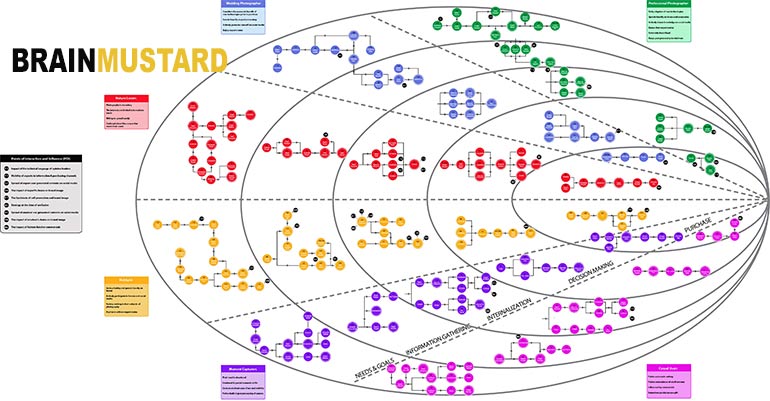Segments
Historically, companies specializing in optics and imaging products viewed the North American market for photography divided into two major segments: professional and non-professional consumers. For many years, Nikon has been the unrivaled market leader in the professional segment with little presence in the non-professional one.
In past decade, the market for professional cameras has been shrinking and Nikon has been facing serious challenges in attracting the consumers for its non-professional cameras despite the company’s reputation for technological superiority. In addition, the advent of smart phones with high resolution cameras has made the competition in the non-professional market ever more tightening. Nikon’s marketing campaigns and commercials featuring celebrity endorsers like Ashton Kutcher failed to create significant excitement in the market that would lead to serious tractions.
We used the state-of-the-art social media technologies and advanced artificial intelligence algorithms to listen to millions of conversations that consumers are having about their experiences with cameras and analyzed them to identify where the problem resides. Contrary to the common belief among the executives and industry experts, we discovered that the solution has little to do with the product and technology itself. Instead, it resided within the ecosystem where Nikon was a prominent player.
We used a social influence map for the key psychographic segments to illustrate the issues within the context of consumers’ ecosystem and visualize the roots of the problem, and offer plausible solutions to overcome those barriers. Through this process, instead of the traditional two market segment approach, we identified 12 major psychographic segments with respect to their attitudes, habits, and behavior towards Nikon and photography in general.

Moreover, these social influence maps visualized the influence of personal and social factors in consumers’ decision making process. The findings deepened our understanding of how and why specific underlying factors were influencing and leading the consumers to make certain decisions. In addition, we identified the role and significance of the different reference groups – aspirational, associative, and dissociative – that shaped these decisions and how these groups interacted with other segments.
Our state-of-the-art social media technologies and advanced artificial intelligence algorithms allow us to listen to millions of conversations that consumers are having about their experiences.
Another important and critical aspect of these social influence maps was that they enabled our client to visually follow the flow of information and the interaction among different segments, and verbalize how these interactions would shape the decision making process for each segment. Equipped with these findings, our client was able to alter the choice architecture for their consumers and enhance their overall brand experience.
For example, one of the notable segments that was overlooked by many industry experts were “watchers” for whom the need for photography is secondary and only serves as means for another purpose. The members of this segment are fervent admirers of nature, culture and history, and use photography to capture their passion. For example, many bird watchers need expensive professional cameras to be able to take a clean shot of rare breeds of Quetzal in order to show and tell other bird enthusiasts. Other nature lovers would love to capture a crisp close-up image of a purple Lilli with a honey bee crawling on it.
Based on their primary interest, nature lovers would only require certain functionality, such as macros. Unlike other technology savvy group, they do not exhibit strong brand preferences, and neither are looking for the most advanced equipment. Instead, they are satisfied with an option that would simply meet their requirements.
Considering their lack of expertise, nature lovers turn to the Internet and social media to seek advice regarding camera choices, in fear of making a costly mistake by purchasing the wrong equipment. However, their interactions on social media was futile because the language and jargons used by the technically savvy groups were not comprehendible and frightened the members of this segment. As such, many of them opted for Cannon just because they found it a friendlier brand to less technically savvy users.
Equipped with this knowledge, Nikon introduced two major touch points in the customer experience journey to alleviate this problem. For one, Nikon introduced an interactive decision support system to help consumers find the exact models that would satisfy their immediate needs. Hence, that eliminated the need for the direct interaction between their technically savvy segment (core customers) and more casual users. Secondly, Nikon altered the customer journey path in such a way that makes the in-store experience in general electronic shops geared towards average customers as opposed to more sophisticated consumers. For instance, the sales people at BestBuy were trained and incentivized to be more curious about the specific needs of the shoppers and offer the options that were more suitable to the specific needs of the customers.
If you would like to see a demo of our interactive customer experience maps or just want to see whether our solutions are right for your company, please contact us. We love to brainstorm with you.





